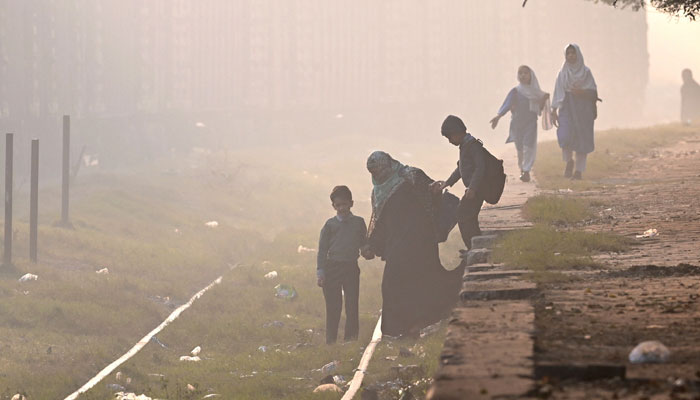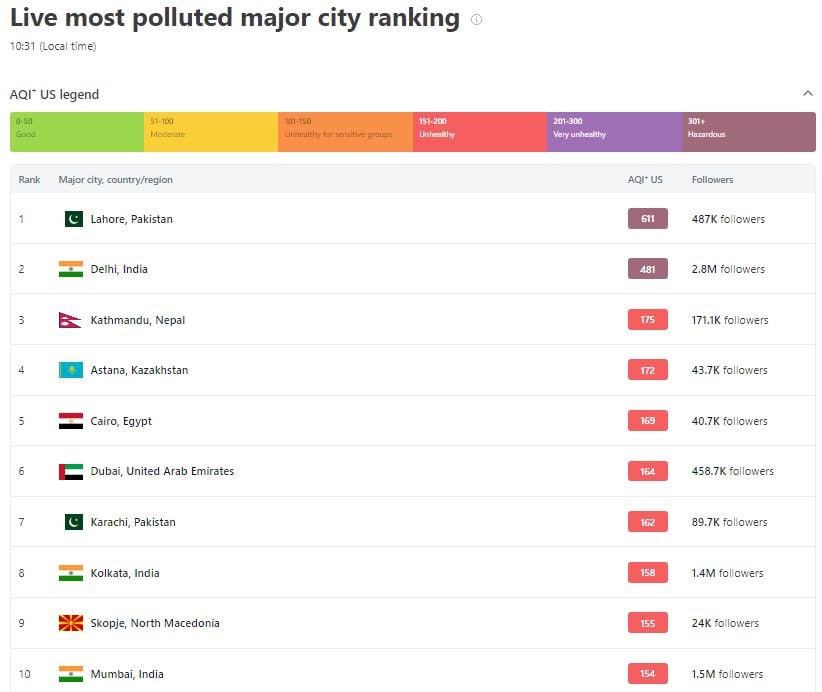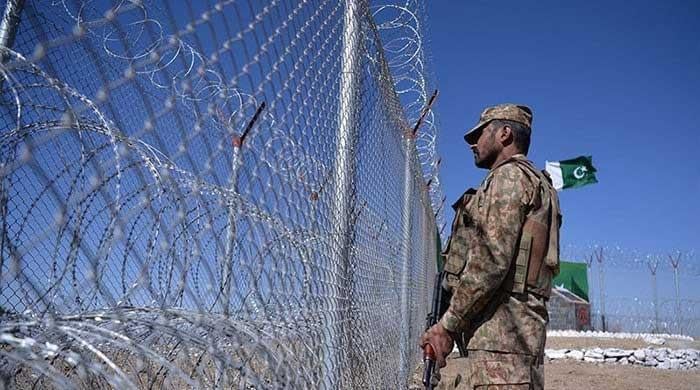Lahore reclaims top spot as world's most polluted city
Punjab's capital becomes world's most polluted city once again days after observing improvement in AQI
November 28, 2024

- Lahore records world's worst air pollution level with AQI of 611.
- Spike in Punjab's capital's AQI comes amid ease in restrictions.
- Multan remains country's second-most polluted city with AQI of 260.
Lahore on Thursday returned to the top of the world's most polluted cities list as its air quality index (AQI) worsened, days after observing a slight improvement.
Punjab's capital had slipped to the second rank on the list for the past few days as the air pollution in the city dropped amid strict measures imposed by the Punjab government to improve AQI.
On Thursday, the AQI was recorded at 611 in the megapolis around 10:30 this morning, registering the worst air quality in the world while the (PM2.5) pollutants in the air amounted to 381, which is 76.2 times higher than the World Health Organisation's (WHO) annual air quality guideline value.

The 600 mark is considered hazardous for human health by Swiss air quality technology firm, IQAir. However, Lahore's US consulate area recorded a hazardous AQI of 1055.
Punjab, with over half of Pakistan's 240 million population, has been enveloped in thick smog for nearly two months, reaching alarming AQI levels.
This has led the provincial government to implement lockdown-like measures in severely affected areas, including weeks-long school closures, restrictions on public space access, and limits on operating hours for restaurants and markets.
These efforts helped the authorities to bring down smog levels to some extent, as per the air quality monitors' data, but AQI levels have seemed to spike again after the provincial government eased these restrictions following an improvement in the air quality.
Today, Multan — the second-most polluted city in Pakistan — recorded an AQI of 260 which is considered "very unhealthy" but is significantly lower than the alarming AQI of 1,571 that it touched a few weeks ago.
The concentration of PM2.5 particles was 37 times higher than the levels considered healthy for humans.
Meanwhile, Peshawar ranked as the third most polluted city in the country, with an AQI of 259 around 10am, and PM2.5 levels 36.8 times higher than WHO guidelines value.
Karachi had the fifth-worst air quality in the country, and the seventh-worst air quality in the world, with an AQI value of 162 and 14.2 times higher concentration of the particulate matter.
Every winter, a mix of low-grade fuel emissions from factories and vehicles, exacerbated by seasonal crop burn-off by farmers, blanket parts of Punjab, trapped by cooler temperatures and slow-moving winds.
According to a University of Chicago study, high levels of pollution have already reduced life expectancy in Lahore, a city of 14 million inhabitants, by 7.5 years.
Breathing toxic air has catastrophic health consequences, with the WHO warning that strokes, heart disease, lung cancer and respiratory diseases can be triggered by prolonged exposure.
Similar hazardous conditions have hit India's capital New Delhi, where air pollution has been exacerbated.
Experts believe that modernising car fleets, reviewing farming methods, and making the transition to renewable energies are key to overcoming the smog that paralyses millions of Pakistanis and Indians every year.









